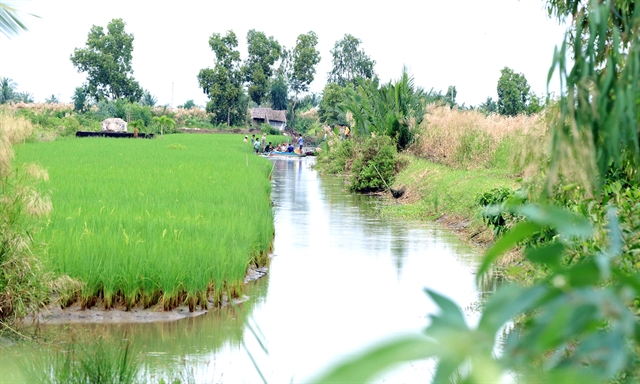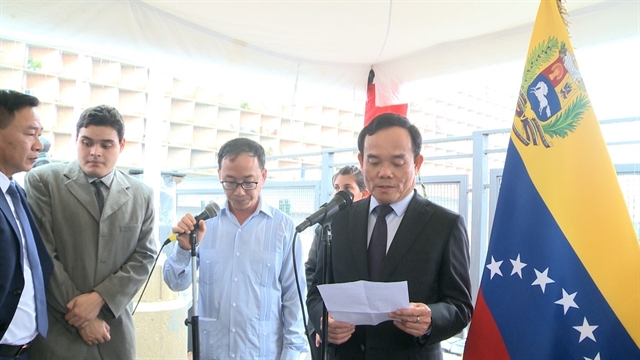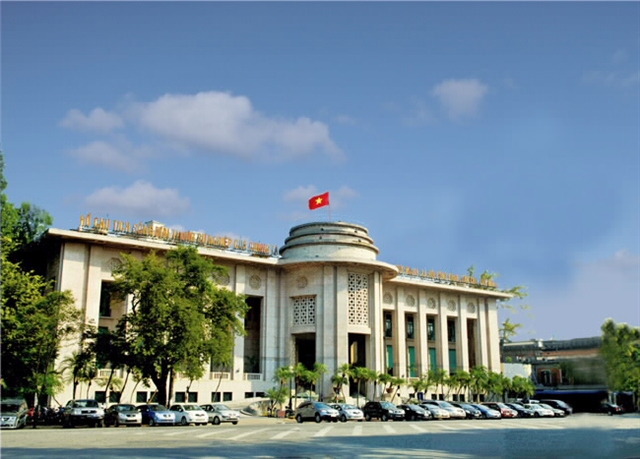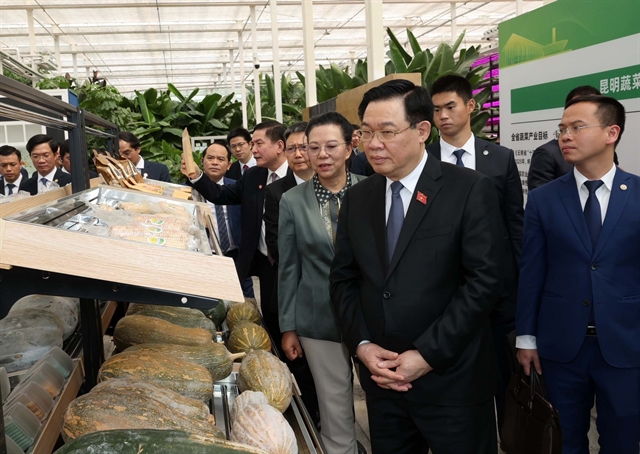 Life & Style
Life & Style
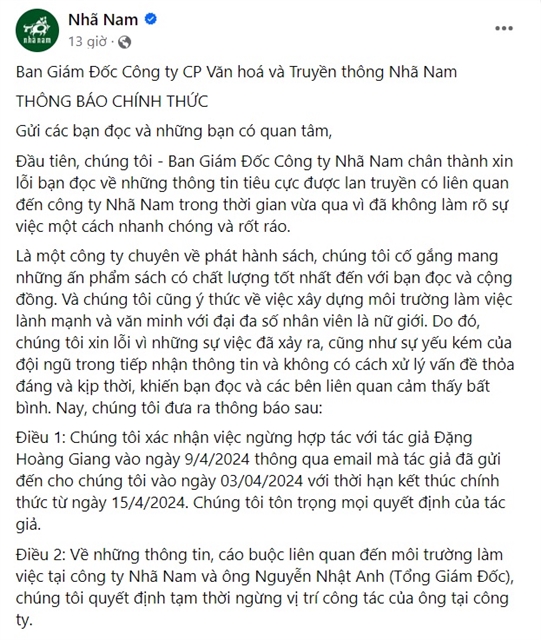
Thanh Chiêm Palace (1602-1883) was a cradle of Vietnamese romanized script and the priest Francisco de Pina (1585-1625) was the founder of the modern writing system of the Vietnamese language.
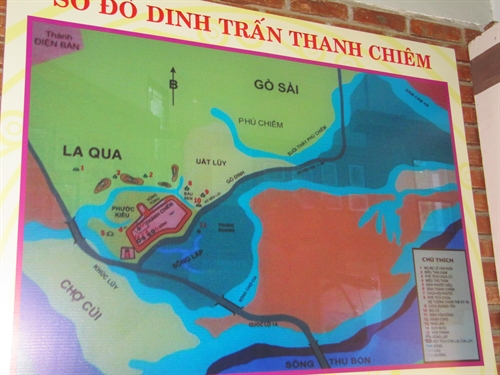 |
| Birthplace of script: An old map of the Thanh Chiêm Palace is on display at a workshop on the palace and Vietnamese script in Quảng Nam Province. — VNS photos Công Thành |
QUẢNG NAM — Thanh Chiêm Palace (1602-1883) was a cradle of Vietnamese romanized script and the priest Francisco de Pina (1585-1625) was the founder of the modern writing system of the Vietnamese language.
Vice chairman and general secretary of the Vietnam Association of Historical Science, Dương Trung Quốc made the claims in a scientific conference on Thanh Chiêm Palace and Vietnamese Script in Điện Bàn town yesterday.
Quốc said over 30 out of 70 reports revealed the existence of the defunct palace and the introduction of the Vietnamese writing system attached to western missionaries.
“The modern Vietnamese writing system emerged as a ‘river’ that was created by different ‘streams’, and the first westerners came to the country to study Vietnamese language and create Vietnamese script by borrowing Latin to transcribe Vietnamese,” Quốc told Việt Nam News on the sidelines of the conference.
“Hội An was seen as a busy trading port in previous centuries, and it was an entrance for cultural and Christian preachers in the south of Việt Nam,” Quốc said.
He said the latest documents found and studied by researchers, priests and scientists have determined the conclusion of the founding of the Vietnamese writing system and Thanh Chiêm Palace was named as its place of origin and the first school specialising in the teaching of Vietnamese script.
Quốc, who is member of the National Council of Heritage, emphasised that Thanh Chiêm Palace was seen as a threshold in enlarging the country’s territory under the Nguyễn Dynasty.
Researcher Nguyễn Văn Đăng said Thanh Chiêm Palace played a role as a big centre of administration, culture and military in the south of the country in the 1600s.
He said it sheltered at least 5,000 warriors and a big ship-yard in what is now Điện Phong Commune on the Thu Bồn River bank.
He said the Palace, which was believed to be built in 1602, also provided warriors for the expansion of the country’s territory southward.
Professor Hoàng Chương from Việt Nam Centre of Research and Preservation of Culture, said ancient documents related to the priest Francisco de Pina revealed that he had lived in Nước Mặn (now Bình Định Province) and Thanh Chiêm Palace, and he was the only western missionary speaking Vietnamese fluently.
Chương also said the introduction of the Vietnamese writing system would be from 1618-21 before Alexandre De Rhodes (1591-1660), a French Jesuit missionary and lexicographer, continued uncompleted research on Francisco de Pina during a move to the north of Việt Nam (1635-1645).
According to priest Nguyễn Trường Thăng, a dictionary of Vietnamese script-Latin-Portuguese, which was contributed by Francisco de Pina and his then students, was believed to have been printed in Rome in 1651.
He said historical documents of the Society of Jesus (or Societas Iesu in Latin) in Việt Nam also revealed that Francisco de Pina had lived in Thanh Chiêm Palace in 1620.
Historian Dương Trung Quốc said in a previous conference in 2002 that Thanh Chiêm Palace had been identified with old documents and three archaeological field studies in 1999, 2000 and 2001 by Japanese experts from Showa Women’s University in Japan.
Nguyễn Quang Sinh, deputy director of the provincial department of Science and Technology, said archaeology studies on ancient tombs at the church of Anre Phú Yên in Điện Phương Commune in Điện Bàn Town are needed to clarify the resting place of Francisco de Pina.
He said the palace, which was recognised as a provincial relic in 2008, should be protected as a National special relic for further research in the future.
Sinh said that now the land area of Nguyễn Du Primary School in Điện Phương Commune was sited as the former foundation of Thanh Chiêm Palace.
He said artifacts and ceramic jars and fragments found in the 1990s excavations also proved the existence of the old palace. — VNS
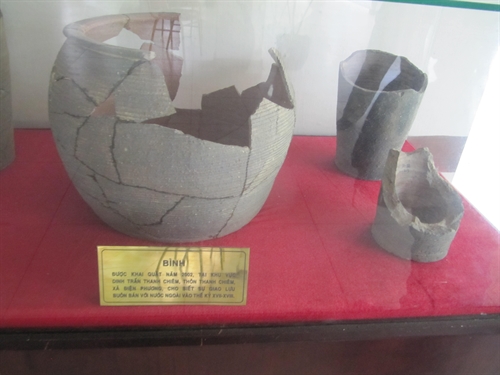 |
| Artifacts: Ceramic fragments and jars were found at an excavation in the Thanh Chiêm Palace in Điện Phương Commune of Quảng Nam Province. |
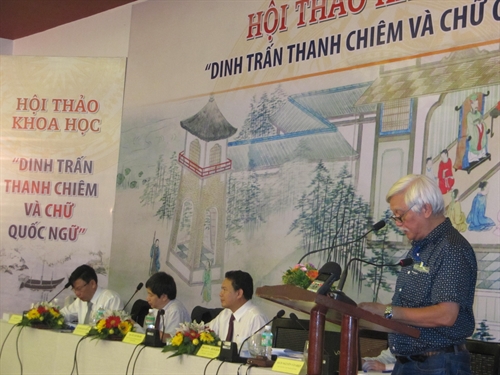 |
| Ancient history: Historian Dương Trung Quốc presents his speech at the conference. |
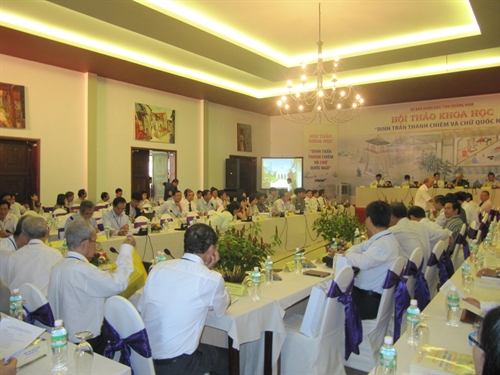 |
| Experts: Researchers, historians and local officials participate in a conference on the palace and Vietnamese script in Quảng Nam Province. |

